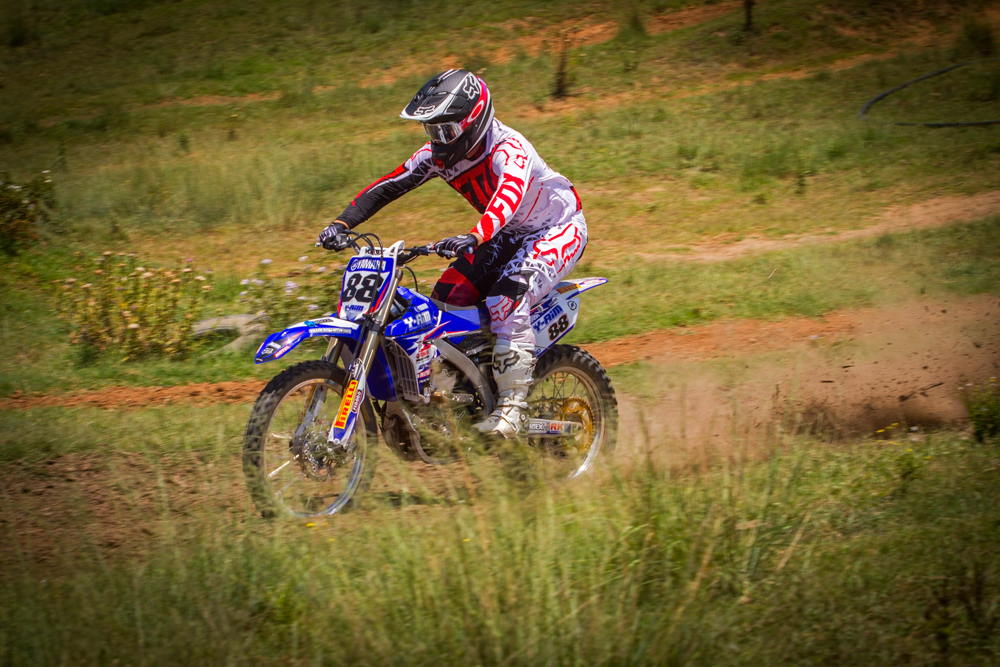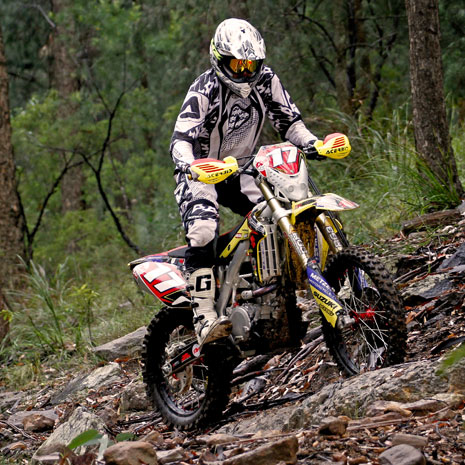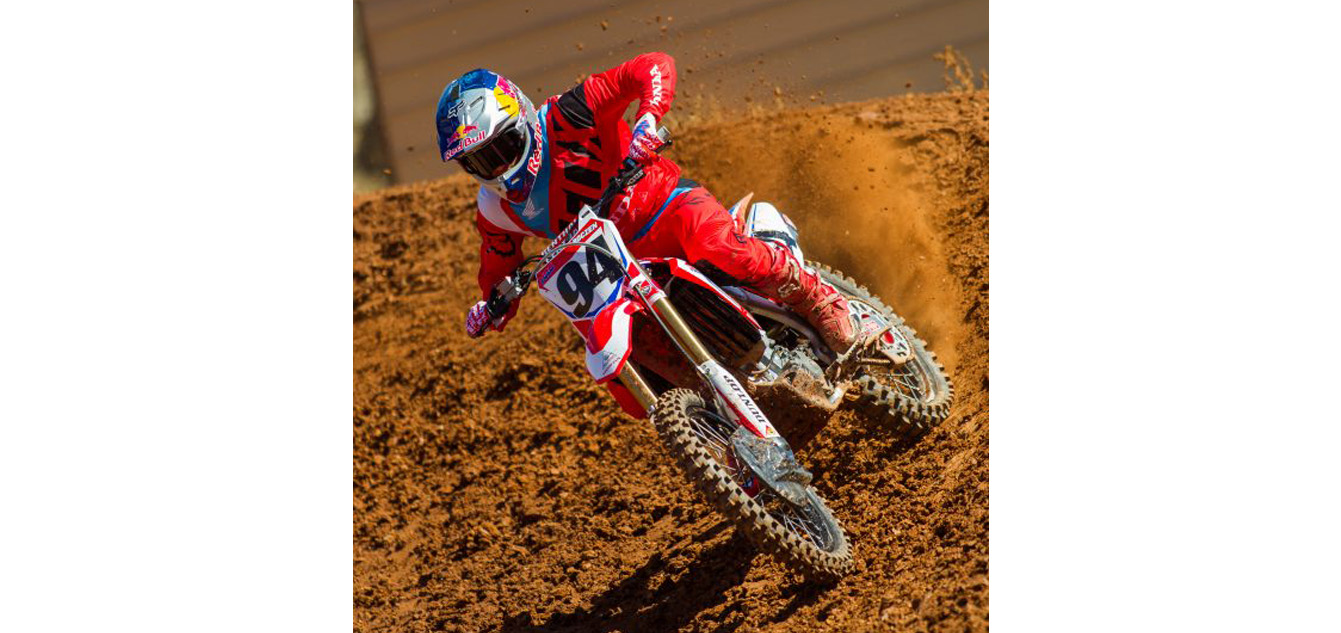
HIGH-SPEED BRAKING: Slowing down is a very important part of going fast
STORY SHANE BOOTH | PHOTOGRAPHY MATT BERNARD

BRAKING MARKERS
The first step to slowing your bike down is to choose where to start doing so. At first you may pick things on the side of the track that you can use as markers. Make sure the objects are fixed and aren’t going to move between laps. This can help you begin to find some consistency in your braking but as you become more experienced you’ll find you start going by feel. You’ll feel how fast you’re going, combine that with looking ahead at the next obstacle and you’ll know when you need to brake. You’ll be surprised at how accurate you become just from experience. We don’t have speedos or proper braking markers, so this is an important skill to build.
SET YOURSELF
It’s important to set yourself in the correct position on the bike before applying the brakes. The whole purpose of the braking position is to be able to brace yourself on the bike while applying the brakes. You need to be in the standing position with your weight shifted back so you can brace through your legs and arms. Gripping the bike with your legs will also help you relieve some pressure off your arms along with keeping the bike straight through any braking bumps. If you apply the brakes before setting yourself in this position, you will struggle to push your weight back. The usual result is to end up with your weight dangerously forward.
DROP ANCHOR
Once you’re in the braking position it’s time to apply the brakes. One thing that seems too obvious to mention, but I’m going to anyway, is to make sure you’ve rolled the throttle off. Sounds stupid, but riders can get a little panicked and try to stop the bike with the throttle still half turned. When you apply the brakes, it’s a squeeze of the front brake and a push of the rear — don’t grab and stomp. Your goal is to brake as hard as possible while keeping both wheels turning. When you squeeze the front brake, it progressively increases braking performance, which in turn allows the amount of traction at the front wheel to increase and allow the increased braking. If you grab a handful of front brake lever, this won’t happen — the wheel will lock and you’ll go down. It’s just as important to keep the rear wheel turning, too. When the rear locks it tends to let the rear of the bike start to sway side to side. So, if you feel that happen, release some pressure and get it turning again. You don’t want your rear end stepping out right before you hit a big braking bump.
REMEMBER TO SHIFT
Once all of the above is under control there’s one last thing to do and that’s downshift so you’re in the correct gear for whatever it is that you’re slowing down for.
ADVANCED SKILL: TRAILING THROTTLE
Once you’re very comfortable with the braking process, a technique you can add to your arsenal is trailing throttle. This works very well when you’re braking at high speeds and the surface is rough. The technique involves leaving a small amount of throttle applied while braking. This helps keep the rear of the bike settled and it will generally kick less off any big bumps. If there is one large bump in amongst the braking area, you may even release a slight amount of brake pressure to allow the bike to handle it before reapplying straight after.



